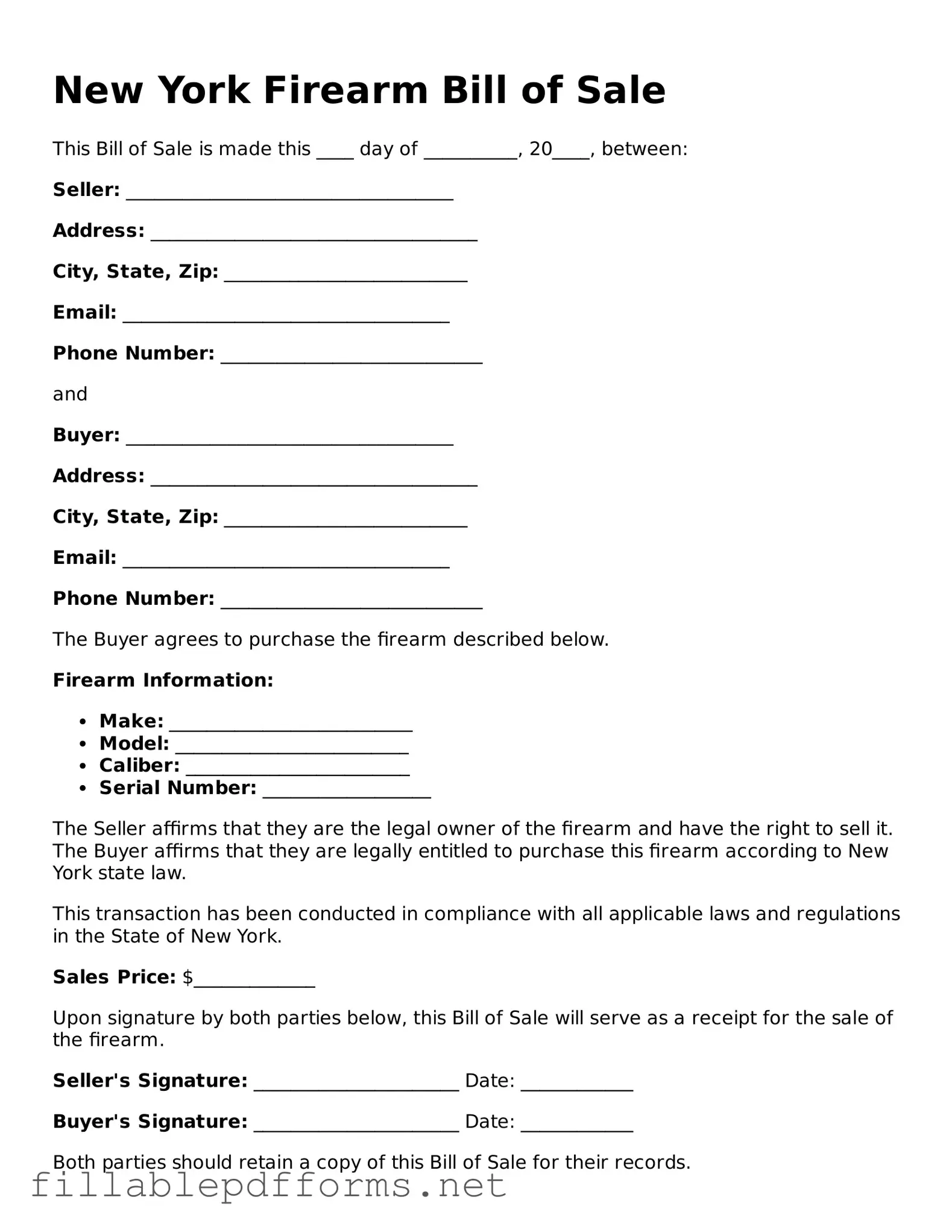Attorney-Verified Firearm Bill of Sale Form for New York State
The New York Firearm Bill of Sale form is a crucial document used to record the sale and transfer of firearms between individuals in New York State. This form helps ensure that both parties have a clear understanding of the transaction and provides legal protection in case of future disputes. Understanding the importance of this form can help promote responsible firearm ownership and compliance with state laws.
Launch Editor Here
